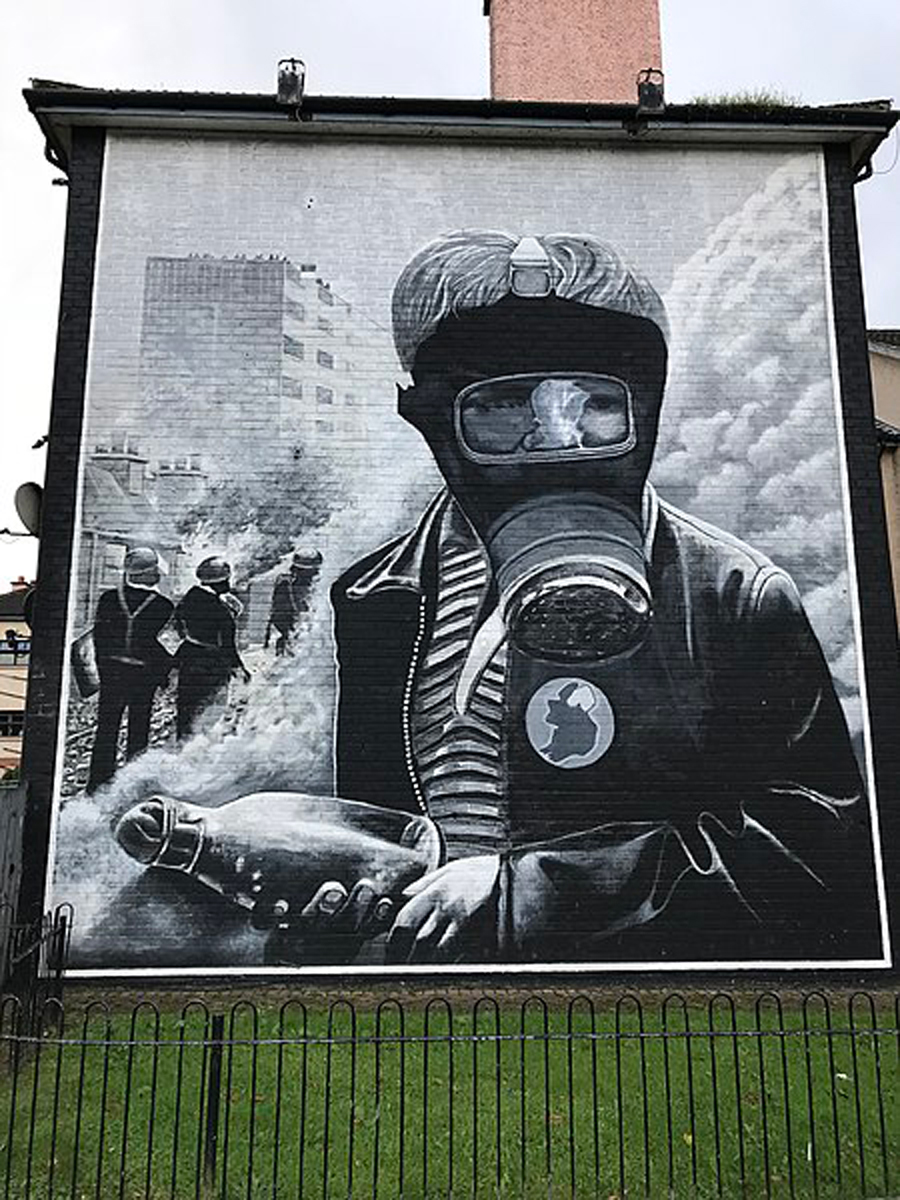How Murals Have Served as Mirrors for Political Change
Mural art that challenged authoritarianism was popular throughout the 20th century, and its power persists, from Tijuana to Hong Kong
Mural art that challenged authoritarianism was popular throughout the 20th century, and its power persists, from Tijuana to Hong Kong

Mexican artist Enrique Chiu has been working with more than 3,800 volunteers to paint uplifting messages of peace that, once completed, will stretch in segments from the Pacific Ocean to the Gulf of Mexico. Their ‘canvas’ is unconventional: Chiu and his fellow citizens are painting a mural on the Mexican side of the US-Mexico border in response to US president Donald Trump’s 2016 election pledge to build a ‘big, beautiful wall’ between the two countries. A work of art and activism emblematic of our time, the mural speaks not only of division and the universal experience of migration but of resilience and hope. It also evokes a rich lineage of political wall art.
Historically, Mexican muralism is a public artistic endeavour. While the earliest-known Mesoamerican wall paintings date back to the Olmec civilization of around 900 BCE, muralism first became yoked directly to politics by the socialist government that emerged victorious after the Mexican Revolution of 1910-20. To promote the revolution’s left-wing ideals, the three leading muralists of this period – David Alfaro Siqueiros, José Clemente Orozco and Diego Rivera (known as los tres grandes) – were commissioned to create works on public buildings that narrated the past and present of the Mexican people. What started as a state-approved pedagogical programme, however, was applied by artists in daring ways: the muralists differed not only in graphic style but in the social themes they addressed and in their interpretations of revolutionary culture. Unlike his fellow muralists, for instance, Orozco never glorified the Mexican Revolution; rather, having fought in it, he depicted the horror of all war, regardless of ideology. As a result, many of his murals were heavily criticized; some were even defaced.

However, the burden of risk that comes with challenging authority is best not shouldered by a single individual and the importance of articulating a collective identity has long been understood by disenfranchised groups. The muralists of the African-American Black Arts Movement of the 1960s and ’70s achieved just that, painting portraits of heroes and heroines of Black history in majority-Black neighbourhoods. These tributary works, like The Wall of Respect in Chicago (1967-71), used the medium for political commemoration and historical literacy. Across the Atlantic, civilians were likewise painting the Western face of the Berlin Wall until its fall in 1989, while almost 2,000 murals appeared in the Northern Irish cities of Belfast and Derry during the years of The Troubles (1968–98). If murals serve as mirrors of political change, then the 20th century’s tumultuous struggles have been widely reflected.

As Chiu’s latest collaborative work suggests, political mural art today has vastly scaled up. Last year, Hong Kong’s New Territories residents campaigned to preserve rural areas by painting murals throughout the village of Ping Yeung San Tsuen. The ‘Rainbow Village’ they created transformed into a tourist destination, forcing the bulldozers to back down. Artistic expressions of defiance have also been widespread as part of the recent Hong Kong protests, which saw nearly two million people take to the streets to denounce a pro-Beijing extradition law. The largest demonstration in the nation’s history harnessed the impact of political graffiti – an offshoot of mural art, though also a medium in its own right. Strategically placed near the Legislative Council, slogans like ‘It was you who taught me peaceful protests don’t work’ – referring to the 2014 Umbrella Movement – asserted civic memory. Murals of support for Hongkongers cropped up as far afield as the Lennon Wall in Prague.

Melbourne likewise expressed its disdain for Islamophobic Australian MPs Pauline Hanson and Fraser Anning on its walls after this year’s New Zealand mosque attack, whilst murals upholding Indigenous presence decorate many of Sydney’s neighbourhoods. Graffiti was also used to communicate the democratic demands of the 2011 revolution in Cairo, during the Arab Spring, undeniably changing popular perceptions of street art, which – thanks to its public, interactive and instantaneous nature – has subsequently been adopted by Egyptians as a legitimate form of media. In Cyprus, where graffiti in Turkish and Greek has commented on the island’s division since 1974, wall art is now looking outwards: recently, tribute paintings have appeared for victims of the 2015 Nepali earthquake and migrant workers worldwide.
The political nature of walls themselves – separating, as they do, nations and ideologies, the public arena from the private – makes them an invocation to artistic expression. Political convictions like environmentalism and feminism are not bound by national borders; nor are the forms of authoritarianism that right-wing populism, nationalism and religious fundamentalism embolden. Yet, while resistance movements today may have international reach and resources, the bright future they envisage can still very much be seen written on the wall.
Main image: Enrique Chiu's border wall mural. Courtesy: the artist

















